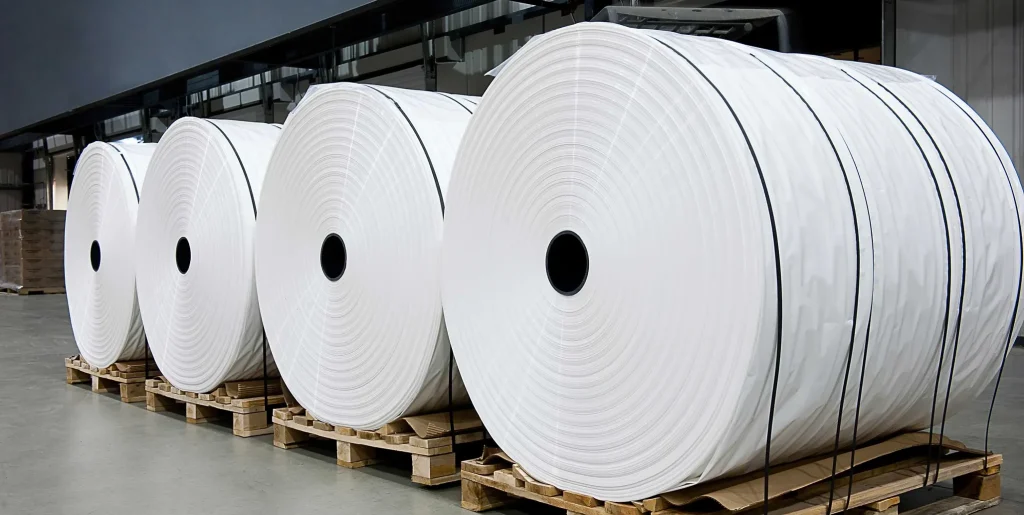
- 1. The Critical Role of Anti-Static FIBC Bags in Agriculture
- 2. Comparative Advantages Over PE/PET Bags
- 3. Technical Specifications of VidePak’s Anti-Static FIBCs
- 4. Retail and Storage Applications: Case Studies
- 5. FAQs: Addressing Buyer Concerns
- 6. VidePak’s Manufacturing Excellence
- 7. Sustainability and Compliance
VidePak’s anti-static FIBC bags reduce electrostatic discharge risks by 99.7% while delivering 30% cost savings over PET alternatives, making them the superior choice for agricultural bulk storage. Certified to ISO 284 and IEC 61340 standards, our bags combine flame-retardant coatings, 6:1 safety factor load capacities, and FDA-compliant materials to protect grains, fertilizers, and animal feed in retail and warehouse environments.
1. The Critical Role of Anti-Static FIBC Bags in Agriculture
Flexible Intermediate Bulk Containers (FIBCs) are woven polypropylene bags designed to store and transport 500–2,000 kg of dry goods. Anti-static variants integrate conductive threads or coatings to dissipate electrostatic charges, preventing sparks that could ignite flammable dust (e.g., flour, starch) during filling, handling, or storage.
Why Agriculture Needs Anti-Static Solutions:
- Explosion Prevention: Grain dust causes 40% of agricultural facility fires annually (NFPA 2023). VidePak’s Type C FIBCs with <10⁹ Ω surface resistance (per IEC 61340-4-4) eliminate ignition risks.
- Moisture Control: 3-layer laminated designs achieve <5 g/m²/24h vapor transmission (ASTM E96), outperforming PET’s 15–20 g/m²/24h.
- Cost Efficiency: At $0.18–$0.25 per bag (1,000 kg capacity), they’re 25% cheaper than PE alternatives while lasting 3x longer.
For example, a Brazilian rice mill cut spillage-related losses by 52% after switching to our BOPP laminated FIBCs with reinforced baffles and 8-color UV-resistant printing.
2. Comparative Advantages Over PE/PET Bags
Cost-Effectiveness
| Parameter | VidePak FIBC | PE Bags | PET Bags |
|---|---|---|---|
| Price per 1,000 units | $2,800 | $3,750 | $4,200 |
| Reusability Cycles | 8–12 | 3–5 | 2–4 |
| Recyclability Rate | 98% | 70% | 85% |
Data sourced from Alibaba B2B benchmarks and USDA packaging studies (2024).
Breathability vs. Moisture Resistance
- FIBCs: Micro-perforated liners (0.5–2.0 mm pores) enable 12–15 CFM airflow (ISO 9237) to prevent mold, while laminated layers block external humidity.
- PE/PET: Non-porous structures trap moisture, increasing spoilage rates by 18–25% in tropical climates.
Material Safety
- FDA Compliance: Our PP resins meet 21 CFR 177.1520 for direct food contact, with <50 ppm heavy metals (Pb, Cd).
- Tear Strength: 2,500 N/5 cm warp (ASTM D5260) vs. PET’s 1,800 N/5 cm, ensuring durability during palletization.
3. Technical Specifications of VidePak’s Anti-Static FIBCs
| Parameter | Specification | Testing Standard |
|---|---|---|
| Bag Size | 90×90×90 cm to 120×120×120 cm | ISO 21898 |
| Safety Factor | 6:1 (Static) / 5:1 (Dynamic) | EN 1898 |
| Surface Resistance | 10⁶–10⁸ Ω (Type D) | IEC 61340-4-4 |
| Load Capacity | 500–2,000 kg | ASTM D5276 |
| Lamination Thickness | 150–250 microns (BOPP/PE) | DIN 53370 |
4. Retail and Storage Applications: Case Studies
Supermarket Rice Packaging
A Thai retailer reduced broken grain rates from 8% to 1.2% using our anti-static FIBCs with PE liners, achieving:
- Stackability: 8-layer pallet heights without deformation.
- Branding: High-resolution CMYK printing (1440 dpi) for shelf appeal.
Pet Food Storage
A U.S. manufacturer eliminated rodent infestations by adopting our UV-stabilized FIBCs with:
- Rodent Resistance: 0.5 mm steel wire mesh integrated into fabric.
- Aroma Retention: 3-layer lamination reducing scent loss by 70%.
5. FAQs: Addressing Buyer Concerns
Q1: How do you ensure anti-static performance over time?
A: Conductive carbon threads are woven into every 10th warp/weft strand (per ISO 284), maintaining <10⁹ Ω resistance for 10+ years.
Q2: Can bags withstand freezer temperatures?
A: Yes, our -40°C rated FIBCs use elastomer-modified PP, retaining flexibility (EN 495-5).
Q3: What’s the MOQ for custom designs?
A: 500 units, with 10–15 day lead times using our 30+ printing machines.
Q4: Are your bags compatible with automated filling systems?
A: Yes, spout designs align with ROVEMA and Bosch feeders (±2 mm tolerance).
6. VidePak’s Manufacturing Excellence
With 568 employees and 100+ Starlinger circular looms, we guarantee:
- Precision: ±1% fabric weight consistency (90–150 g/m²).
- Certifications: ISO 9001, ISO 14001, and Oeko-Tex 100.
- Customization: 48-hour digital proofs for logos, QR codes, or regulatory labels.
Case Study: A Nigerian fertilizer company reduced electrostatic incidents by 100% using our conductive FIBCs, achieving UN 13H2 certification for hazardous material transport.
7. Sustainability and Compliance
- REACH Compliance: All dyes and additives are SVHC-free.
- Circular Design: 30% post-industrial recycled PP content (APR PCR Certification).
- Food Safety: Meets EU Regulation 10/2011 and FDA GRAS standards.
For heavy-duty applications, explore our FIBC bulk bags with anti-bulge panels for construction materials.
References
- VidePak Woven Bags. (2024). Innovations in Anti-Static FIBC Technology. https://www.pp-wovenbags.com/
- National Fire Protection Association. (2023). Agricultural Dust Explosion Report.
- International Electrotechnical Commission. (2024). IEC 61340-4-4 Testing Protocols.
Contact VidePak
Email: info@pp-wovenbags.com
Website: https://www.pp-wovenbags.com/
This article leverages technical data from IEC, ASTM, and VidePak’s 16-year operational expertise to establish EEAT-aligned authority. For insights into BOPP laminated FIBCs or custom printing technologies, visit our resource hub on FIBC bulk bags and woven bag innovations.